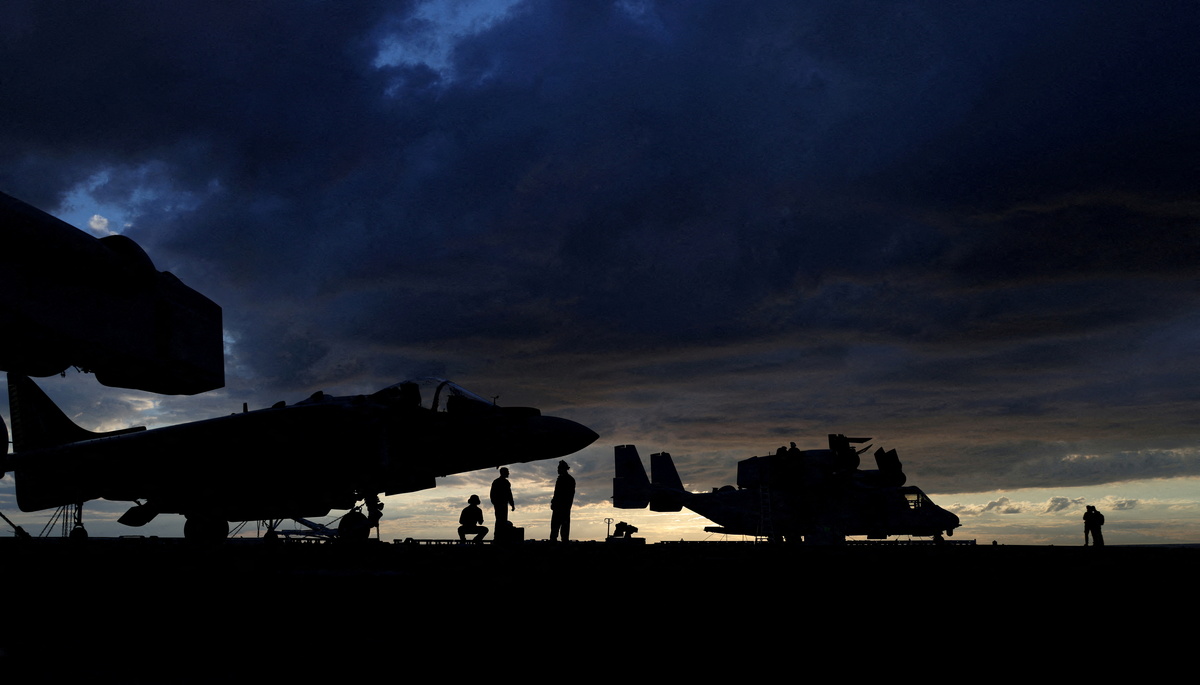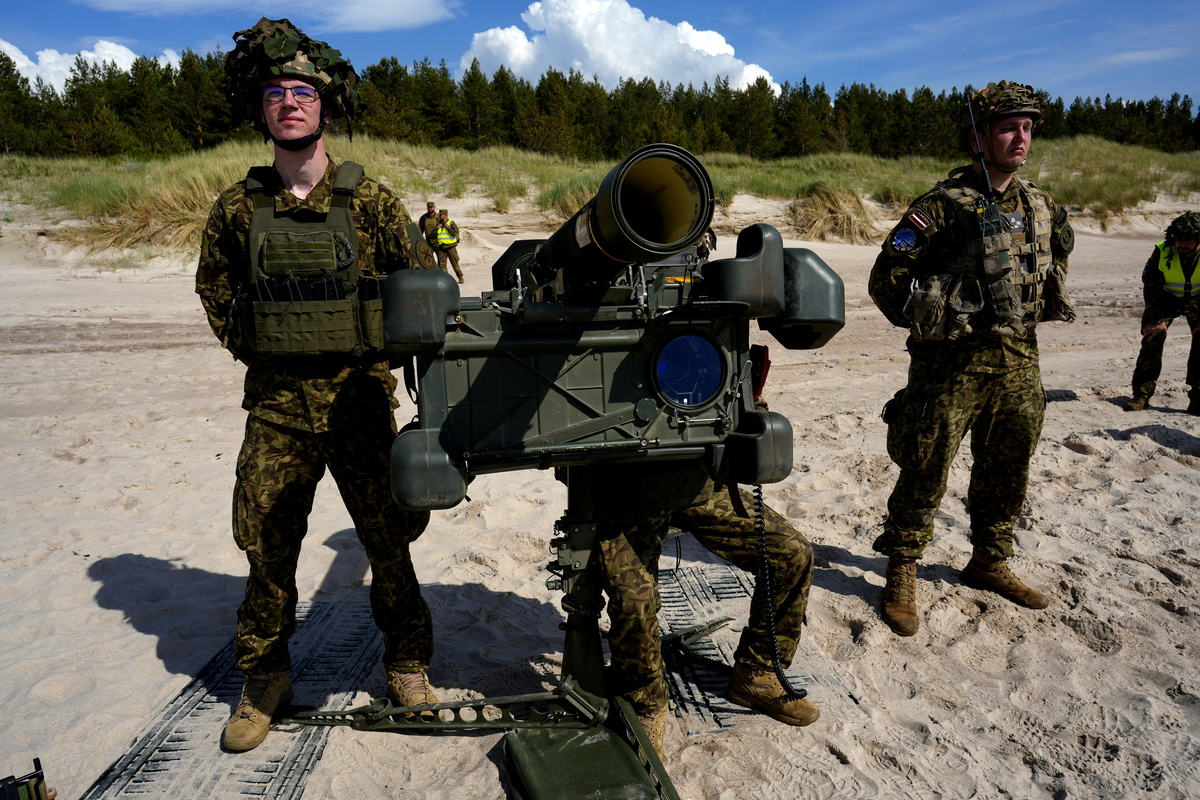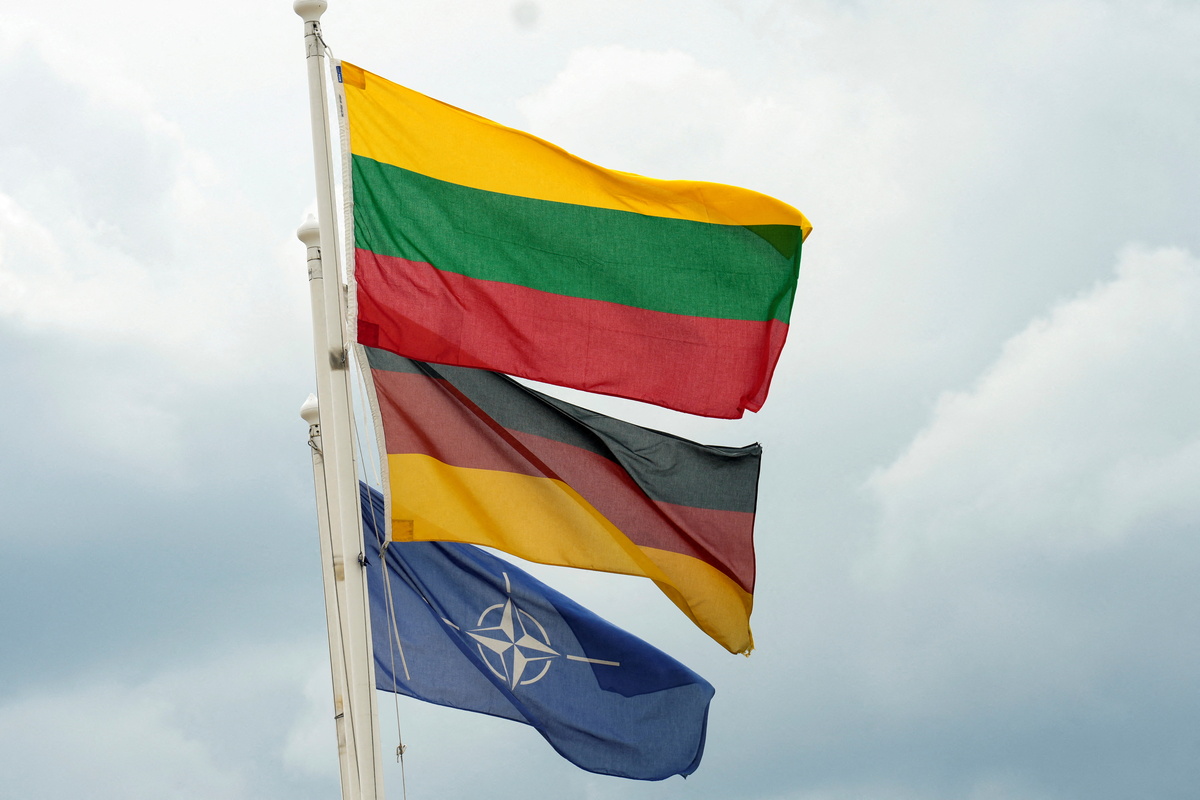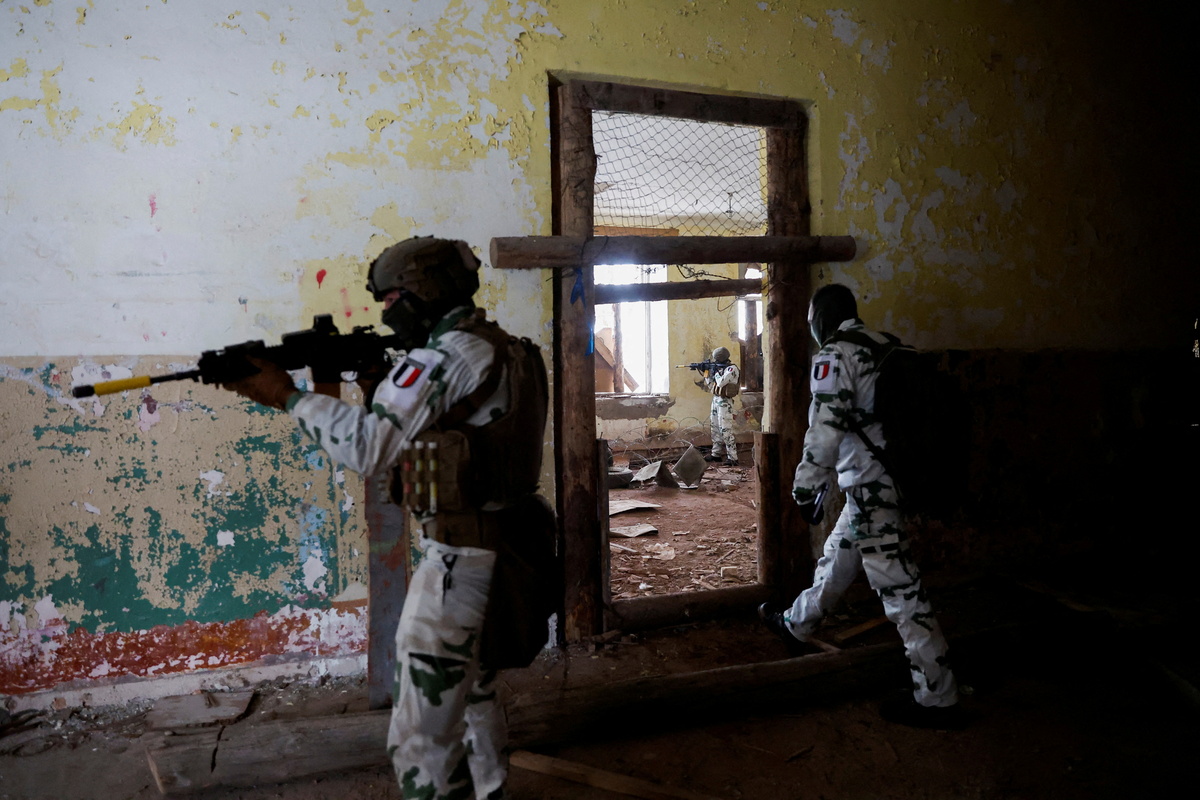
Since Russia invaded Ukraine in February, the Baltic states of Estonia, Latvia and Lithuania have been calling for their region to receive the biggest build-up of combat-ready NATO forces in Europe since the end of the Cold War, to be agreed at a summit on June 28-30 in Madrid.
It will not happen, interviews with seven senior diplomats and officials from leading NATO allies show.

This is partly because the proposals come as the NATO alliance faces a slew of demands not seen in decades: from countering Russia and China in the Arctic to quelling Islamic insurgencies in the Sahel, and tackling new frontiers in space.
Since Russia invaded, the U.S. Congress has approved extra funds and the Pentagon sent F-35 stealth fighters, as well as attack helicopters, to Estonia; Britain doubled its force presence at Estonia's Tapa military base to around 1,700 personnel.
But for many people in the region, which has been occupied by both Soviet Russia and Nazi Germany and which lies within striking distance of a Russian garrison at St. Petersburg, that is not enough. For instance, 84.6% of Latvian respondents to a Benu Aptiekas/Gemius poll in May said they were highly anxious about Russia's invasion.

"The fact that we could be in danger, it's been on the table all the time," said Dzintra Bungs, 82, head of the Latvian Occupation Museum Association in Riga. "It is very important that we have woken up, and that all Europe awakes."
The Baltics, with a combined population of just over six million, want the alliance to boost its pre-Ukraine invasion presence of around 5,000 multinational soldiers by as much as tenfold, as well as adding air and maritime defences.
Many of NATO's 30 allies in Europe and the United States support the calls for a bigger force in principle, but in reality say allies can only commit to maintaining higher troop levels, pre-positioning more equipment, weapons and ammunition in the region and promising rapid reinforcements.

The broad outline for leaders to agree at the summit, the diplomats and NATO officials said, is a model of larger multinational NATO battlegroups in the Baltics, with a commitment to quickly reinforce if Russia were about to invade. Planning for new air and maritime defences will come later.
Many members, including Britain and the United States, do not favour permanent new bases in the Baltics, three of the diplomats told Reuters. They said it would cost billions and be hard to sustain: The states may not have enough troops and weaponry, and a permanent presence would be highly provocative for Moscow.
"The Baltic states will not each get enough NATO troops to create a division," a NATO diplomat said, referring to their request for up to 15,000 troops across the region, as well as more on stand-by in allied countries to complement national forces. "Whatever is decided must be sustainable."
Instead, allied intelligence will help NATO act if Moscow looks set to invade. During informal discussions at NATO headquarters and in capitals, that view has won over the majority, the diplomats and officials said – the plans will need more work after the summit.
The Latvian government declined to comment. Lithuania's presidential office also declined to comment, but an advisor to the president said the country would continue to insist, in the run-up to the summit, on the need for more NATO troops. The office of Estonia's prime minister said it and allies were working out the details of how to strengthen the allied presence.
A senior U.S. defence official at NATO declined to comment. A British defence ministry spokesperson declined to go into details, saying it was "working closely with our friends and partners to explore how we can strengthen the alliance's defensive posture."
Russian President Vladimir Putin says his "special military operation" in Ukraine is essential to ensuring Russia's security. Ukraine and its Western allies call this a baseless pretext for an invasion which has raised fears of wider conflict in Europe.
NEXT IN LINE?
For the Baltics, the issue is clear: They could be next.
NATO currently rotates a multinational troop presence through the region, but the Baltic states say that leaves them vulnerable.
"After the war - I don't think Russia will be defeated - they will still have huge military capabilities remaining," Valdemaras Rupsys, Lithuania's Chief of Defence, told Reuters. "After some time ... they will try to threaten us by military means. You will see."
Since Russia annexed Crimea from Ukraine in 2014, the Baltics have been warning about a Russian threat that many NATO allies considered overblown. Now, looking at Moscow's playbook in Georgia and Ukraine of capturing a small portion of territory from which to build, Baltic states want NATO to change its approach to their region, a strategically crucial gateway to a busy commercial shipping route linking Sweden, Finland, Estonia, Latvia, Lithuania, Poland, Germany and Denmark.
Tuuli Duneton, undersecretary for Defence Policy at the Estonian Ministry of Defence, told Reuters Russia has been preparing for the last 20 years for large-scale military confrontation with NATO while the alliance's focus was partly elsewhere, particularly in Afghanistan.
A public report by the Estonian Foreign Intelligence Service earlier this year said Russia's largest war game to date, near NATO's eastern borders in 2021, involved 200,000 troops, 250 aircraft, 290 tanks, 240 weapon systems and 65 warships. Called Zapad, or West, the war games were evidence of Moscow's long-term strategy to attack NATO, the report said. At the time, the Russian defence ministry said the exercise was rehearsing a purely defensive scenario and allegations it was preparing to invade Poland or the Baltics were false.
The Kremlin did not reply to an email seeking comment.
A MATTER OF TRANSPORT
In May, the kilted bagpipers and drummers of the Royal Welsh Battlegroup played marching songs at a parade ground filled with British, Danish and French troops in the Tapa military base in Estonia. It was a show laid on for visiting ambassadors.
Tapa is one of four bases, originally of around 1,000 troops each, that NATO set up in the Baltic states and Poland after Crimea, from 2017 onwards. That force presence has grown and after Russia invaded Ukraine, NATO activated its Response Force and the United States sent some 20,000 more U.S. troops to Europe. That gives NATO's Supreme Allied Commander in Europe (SACEUR) more than 42,000 troops under his command in Europe, with 120 jets at high alert and over 20 ships ready to respond.
But NATO's Baltic deterrent is still too small, the Baltic states say. U.S. officials have long warned about the Russian army's surface-to-air missile systems in its St. Petersburg Garrison, just 160 km (99 miles) from the Estonian border city of Narva.
"The situation in Ukraine shows we were right," said Estonian Colonel Andrus Merilo, referring to Baltic warnings since 2014. "Estonia cannot lose territory, NATO cannot lose territory."
He and others say the argument that NATO allies could quickly regroup to defend a Baltic state in the event of a possible Russian invasion overlooks an important hurdle: infrastructure.
Before the COVID pandemic, the European Union planned to spend 6.5 billion euros ($6.8 billion) between 2021 and 2027 to modernise Europe's disjointed road and rail links and weak bridges so states could move troops east in the case of conflict with Russia.
But the pandemic shock forced a rethink. Only 1.7 billion euros was allocated.
RIVALRY FOR RESOURCES
Even if the Baltics' proposals are strategically valid, the conflict in Ukraine is sucking up huge resources as the West supplies arms. NATO is also facing other demands.
According to NATO data, last year only 10 of the 30 allies met the alliance's guideline to devote at least 2% of GDP to annual defence spending, although many, from Belgium to Germany, have since pledged much more.
France's well-equipped military is focused on Africa, while 20 years of cutbacks in Germany have robbed it of basic equipment and technology. Britain aims to further cut the size of its land forces by 2025, as Belgium, the Netherlands, Romania and others have done – in part to invest in new technologies like robots and drones and compete with China in the domains of space and cyber. Italy has maintained a strong overseas presence of its troops for decades but is one of the lowest spenders in NATO.
NATO is also setting up or strengthening combat units in Bulgaria, Hungary, Slovakia and Romania. Romania is receiving a 1,000-strong troop contingent from France, Belgium and the Netherlands, by year-end.
In closed-door discussions at NATO, Spain and Italy have called on the allies to also pay close attention to the southern flank. Spain's foreign minister, Jose Manuel Albares, has spoken publicly of his concerns about what he called in April the "Russian threat from the south," arguing that NATO should be ready to counter the presence of Russian mercenaries in Mali and Central African Republic, partly because instability could increase African migration towards Europe.
FINLAND TO THE RESCUE?
Another argument against bolstering NATO's permanent forces in the Baltics would be if Sweden and Finland join NATO, as they have applied to do.
The two states, which lie across the Baltic Sea from Estonia, Latvia and Lithuania, would bring two of Europe's most modern and capable militaries into the alliance, at a stroke increasing the allied presence in the region.
That plan, though, is controversial within NATO – Turkey opposes it – and it risks further antagonising Moscow. Turkey, traditionally a big troop contributor to NATO missions but also a friend of Moscow, wants to keep a diplomatic balance, seeing itself as a potential peace broker in Ukraine.
A possible addition to the summit decision, likely to be discussed in the coming months, could be to create bigger, permanent NATO military bases in front-line states with Russia but only send rotating multinational forces through them, rather than stationing troops permanently, according to NATO diplomats and the senior U.S. defence official at NATO.
Unlike U.S. forces in Germany, such bases would not need schools, family housing and other expensive infrastructure, U.S. Army General Mark Milley, chairman of the Joint Chiefs of Staff, said in April in a hearing in a committee in the U.S. Congress.
For Estonian Brigadier-General Enno Mots, NATO must not defer for too long.
"There's a risk that we underestimate Russia's military capability," he told Reuters. "Russia has enough military power to threaten us, for sure."
(Additional reporting by Sabine Siebold in Berlin, Janis Laizans in Riga and Belen Carreno in Madrid; Edited by Sara Ledwith)







